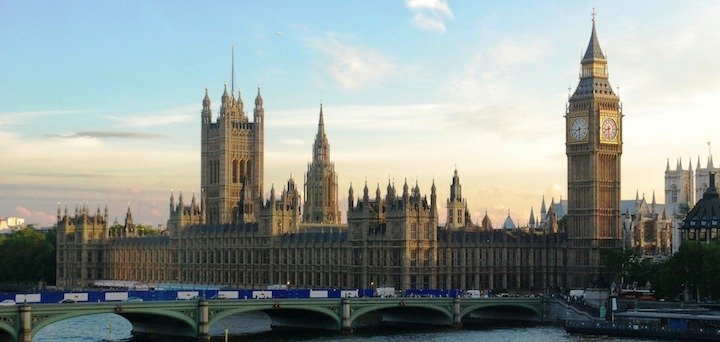The Spending Review is unlikely to provide an end to austerity for councils, so the government must make its plans for local government clear, says Chris McNulty.
Ever since Theresa May’s party conference speech, government ministers have said that austerity – the period of government fiscal restraint since 2010 – is coming to an end. Last year’s Budget announced that real-terms day-to-day spending on most public services would, on average, increase by 1.2% annually between 2019/20 and 2023/24.
Austerity isn’t over for most public services
But much of this increase has already been earmarked for the NHS. While the NHS will receive a 3.4% annual increase in spending over the next five years, the Government’s plans suggest other public services will face real-terms spending cuts in this year’s Spending Review.
Launched at a joint briefing with the Institute for Government, the Institute for Fiscal Studies (IFS) show that over half of total day-to-day spending that will be covered by the Spending Review is accounted for by the NHS, defence and international aid. For these three areas the government has already announced firm commitments to increase spending significantly in real terms. Other ‘unprotected’ public services – including locally delivered services, schools, prisons and the police – will be left with less. The IFS project that spending on these unprotected services will be 1.5% lower in real terms in 2023/24 than in 2019/20.
This implies continued austerity – albeit at a much slower pace than over the past eight years. Unprotected services will face cuts of 0.4% per year, less than the 3% annual average that unprotected public services have faced since 2010/11.
Discretionary council services are likely to feel the strain
If the government chooses to reduce all unprotected spending at the same rate, this will involve cuts to central grants for councils. The central government grant currently makes up on average three-fifths of English local authorities’ spending power. This varies significantly across areas, although the way grant money is distributed is likely to change with the Fair Funding Review. Unless topped up from elsewhere – such as through more rapid increases in council tax – cuts to central grants will mean that councils will have to deliver more for less.
If councils approach this round of cuts as they did the last, they will further concentrate spending on services which they have statutory obligations to provide – in particular, social care for children and adults.
Local services covered by fewer statutory obligations – such as libraries, waste collection, food standards and road maintenance – would likely see further reductions in spending. Day-to-day spending on non-social-care services fell by 32.6% in real terms between 2010/11 and 2016/17.

Councils absorbed some spending cuts by managing to deliver more for less. For example, food standards workers conducted 328 interventions – which include inspections, surveillance, sampling and intelligence gathering – each in 2017/18, more than double the number of interventions workers undertook in 2009/10.
But at the same time service users have been asked to shoulder more of the burden – whether through paying fees or giving up time through volunteering. As full-time staff numbers have been cut, the number of library volunteers has increased from 16,710 in 2009/10 to 47,982 in 2017/18. The number of local authorities charging for garden waste collection has risen from 88 to 199 since 2010/11 and in January 2018, the Ministry of Housing, Communities and Local Government allowed local authorities to increase the fees they charge for planning by 20% in nominal terms.
The government has options to mitigate pressures
The government could cushion the impact of any cuts in central grants by allowing councils to raise more money themselves.
The share of council revenue raised locally is increasing. In 2016/17, 40.4% of English council spending was raised locally – up from 25.2% in 2010/11. This looks set to continue. The Office for Budget Responsibility forecasts that local councils will increase locally raised revenues over the next five years as they continue to draw on their reserves and raise more revenue from council tax and business rates.
But councils are constrained in how much revenue they can raise. English councils are currently only able to retain 50% of business rates revenue, and there is a limit to how quickly they can raise revenues from business rates, which are linked to local economic growth. They cannot raise council tax by more than 3% each year without having to hold a referendum. And reserves can only be spent once.
One option would be for the chancellor to allow councils to increase council tax by more than 3% before having to hold a referendum. Northamptonshire County Council was granted an exception, after the Government allowed it to raise council tax by an additional 2% next year owing to its financial problems. In the absence of major tax devolution, it would not be surprising to see this offer extended to more councils.
The government must make its plans clear at the Spending Review
After a decade of austerity, the easiest efficiency savings have already been made, and choices are getting harder.
Successive governments’ choices over the last decade – cutting central grants and leaving councils more reliant on locally raised revenues – have meant that a broad base of local citizens and businesses are now paying primarily for narrowly targeted social care services. At the same time, universal services such as libraries have been cut back, creating the potential for rising resentment. It has also hit hardest those areas that happen to have relatively high demand for statutory services or a heavy reliance on income from the central grant.
This year’s Spending Review offers the chance to look at whether this is politically and financially viable. The government must use it to set out a clear vision of what services it expects local government to deliver, and explain how the settlement will allow them to do so.
Chris McNulty is researcher at the Institute for Government
Get the Room 151 Newsletter












